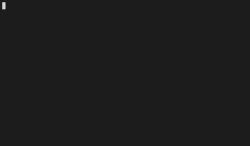Modes
The command has three principal modes of operation as inferred from command-line arguments. [5]
Copy file
For a path to an existing file followed by a path that does not refer to an existing directory, the file at the first path is copied to the second path.
cp [-fHip][--] sourcefile targetfile
Copy files to directory
For one or more paths to existing files followed by a path to an existing directory, the files are copied to the directory.
cp [-fHip] [--] sourcefile... targetdirectory
Copy directory
With the recurse command-line option, typically -r, a path to an existing directory and a second path, the files of the directory are copied to the second path. If the second path refers to nothing, the source directory is copied to that path. If the second path refers to an existing directory, the source directory is copied into the destination directory as a subdirectory.
cp -r|-R [-fHip] [--] sourcedirectory... targetdirectory
Examples
This copies file prog.c to file prog.bak. If prog.bak does not already exist, this creates it. If it does exist, its content will be replaced.
cp prog.c prog.bak
This copies the files jones and smith into the pre-existing directory clients.
cp jones smith clients
This copies file smith to a file named smith.jr. Instead of creating a file with the current date and time stamp, the command copies the date and time from the original. The copy also receives other metadata from the original including access control protection.
cp -p smith smith.jr
This recursively copies the directory clients, including its files, subdirectories, and the files in those subdirectories, to a new directory customers/clients.
cp -R clients customers
Some implementations behave differently in recursive mode, depending on the termination of the directory path. Using cp -R clients/ customers in the GNU implementation behaves as above. However, with a BSD implementation, it copies the contents of the clients directory, instead of the directory clients itself. The same happens in both GNU and BSD implementations if the path of the source directory ends in . or .. (with or without trailing slash).
This page is based on this
Wikipedia article Text is available under the
CC BY-SA 4.0 license; additional terms may apply.
Images, videos and audio are available under their respective licenses.
